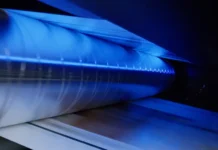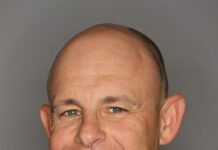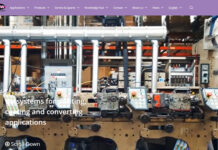Compiled and edited by Nancy Cates, contributing writer
UV+EB Technology
According to an August 2018 analysis from the US Congressional Budget Office, the growth in real gross domestic product (GDP) for the year was projected at 3.1%, with an anticipated drop in the rate of growth to 2.4% in 2019. Employment was expected to remain high. While that’s good news for many, the anticipated growth outpaces that of sustainable output, triggering excess demand and pushing up wages and the price of goods. As a means of controlling that demand and attempting to fend off inflation, the US Federal Reserve is expected to continue to raise interest rates.1
During the same timeframe, new orders for manufactured goods increased 2.3% to $510.5 billion, according to the US Census Bureau. Shipments and unfilled orders were up and inventories down after 21 consecutive monthly increases.2
After months of setting new record highs, the stock market has become more volatile: Is it a typical correction? Or is the bear starting to crash the bull’s party?
While the economic, manufacturing and financial statistics from the recent past can offer a perspective – although sometimes a perplexing or disjointed one – how does the current context help businesses as they look forward to 2019 and beyond? The editors of UV+EB Technology asked some RadTech members and suppliers for their thoughts on the current direction of the curing industry, their biggest challenges and their greatest opportunities.*
The following individuals responded for their companies.
- Gregory Gerin, global marketing director radcure for allnex. A global producer of resins for industrial coatings, allnex serves segments including wood (flooring and furniture), packaging coatings and inks, consumer electronics, automotive, cosmetic packaging and 3D printing, while developing emerging applications in areas such as 3D printing, conformal coatings and composites.
- Gary Sigel, senior principal scientist for Armstrong Flooring. Based in Lancaster, Pennsylvania, the 150-year-old company operates 15 manufacturing facilities in the United States, China and Australia, employing 3,600 individuals in research, development and production of commercial and residential flooring.
- Catherine Heckman, global industry manager, laminating adhesives and coatings for Ashland. Providing specialty chemicals in more than 100 countries, Ashland has nearly 7,000 employees and serves customers in the consumer and industrial markets, including adhesives, architectural coatings, automotive, construction, energy, food and beverage, personal care and pharmaceutical.
- Keate Despain, vice president of marketing for Phoseon Technology. The 2002 start-up in Portland, Oregon, has grown to 160 employees and holds almost 300 patents supporting its portfolio of UV LED lighting offerings in the industrial curing and life sciences markets.
- Tony Renzi, vice president, product management packaging inks, North America, for Sun Chemical, DIC Group. Sun Chemical employs more than 20,000 people in 63 countries, producing printing inks, coatings and supplies, pigments, polymers, liquid compounds, solid compounds and application materials.
UV+EB: Describe your current business situation. What is your company’s direction in the curing industry?
Gerin: Our overall ambition at allnex is to maintain our leading position in the core segments while also developing emerging applications where UV/EB technology has a really solid value proposition, such as 3D printing, conformal coatings and composites.
Heckman: Ashland continues to see solid year-over-year growth in the various market segments we serve globally, especially in the UV/EB curing markets. We have positioned Ashland as a leader in UV/EB curing technologies for overprint varnishes and laminating adhesives within the labels, tags and flexible packaging markets. To support that leadership position, at Label Expo, we launched our PureLED™ portfolio and had an article published on wide web LED laminating adhesives for food packaging in an industry journal.
Renzi: Overall, Sun Chemical experienced growth in the UV/EB market during 2018 as compared to 2017, particularly in the packaging segment.
Sigel: In the second quarter of 2018, Armstrong Flooring had double-digit volume growth in luxury vinyl tile. In May we announced the launch of our proprietary Diamond 10 Technology on made-to-order vinyl composition tile (VCT) that utilizes UV/EB technology. We also launched a completely refreshed heterogeneous commercial sheet line, new resilient products and engineered tile.
Despain: The company’s business situation is very positive, going through a transition while moving from the traditional UV mercury or other technologies to solid-state LED tech and UV LED technology, so the market is going in the direction that we’ve been driving for many years. We serve three main markets. The printing industry is the largest – digital inkjet, flexographic, screen printing and offset. That segment has transitioned about 80% into UV LED printers. Flexographic is just starting to make its transition, so it’s less than 10%, but we believe in the next 12 to 36 months that market will reach 50% UV LED. Our coatings market includes fiberoptic cables, large cables for the construction industries. The last market segment is the adhesive/electronics business, with curing for the manufacture of such items as OLED televisions or microphones for smartphones.
UV+EB: What’s the biggest challenge your business will face in the next 12 to 18 months, and how do you intend to respond?
Renzi: The biggest challenge we’re facing in the UV/EB marketplace is the global shortage of photoinitiators. Many photoinitiators or the intermediates are sourced from China. Government-led environmental assessments have caused many suppliers to either cease or reduce production for extended periods. Additionally, photoinitiator supply has been impacted by explosions, fire, low inventory levels, unplanned turnarounds and various production outages. Supply continues to be in a crisis mode while prices are increasing at double-digit rates.
To manage materials effectively, it could be necessary to offer inks formulated with alternative materials at short notice. We may need to limit orders in excess of historical consumption. We’re doing everything possible to resolve the situation and avoid supply disruptions.
Despain: We have a challenge around the supply of photoinitiators used in the chemistry. We believe it is a short-term challenge until the manufacturing capacity reaches market demand. Specifically, we continue to vary our wavelengths technology in terms of what the market may need to lower the amount of photoinitiators required or increase the performance of the lamp to compensate for the lower concentration of those chemicals that are required for the conversion.
We want to offer a single solution to customers and to be able to say, “This is a combination of elements that – when cured by Phoseon UV LED – works, and it works great.” We need to continue to drive that message to simplify the complexity of the technology.
Gerin: The TPO [diphenyl (2,4,6-trimethylbenzoyl)-phosphine oxide] shortage, linked to the temporary closing of a Chinese factory producing a precursor of TPO, is impacting the graphic segment and should be temporary. When it comes to relabeling, coaters can choose to either continue working with the same formulations – adapting the set-up of the coating lines to the new labels – or looking for reformulations including different photoinitiators. For the second case scenario, allnex is offering and developing solutions. Our LED boosters, self-curing resins and polymeric benzophenone photoinitiators are three solutions allowing formulators to either reduce the use of photoinitiators or replace them altogether.
Heckman: The biggest challenge to our energy-curable business has been and will be raw material shortages that continue to negatively impact our existing business and long-term development success, not unlike any other supplier to the UV/EB industry. Although we believe these issues to be short term, Ashland is working on unique raw material solutions within new product development for innovative differentiation in the markets and to mitigate any potential long-term effects.
Sigel: Like all manufacturers, we are experiencing cost increases in energy, transportation, raw materials and operating costs. In addition, there is the impact of the recently imposed 10% tariff on certain products imported from China. We increased prices to offset the new tariff on affected products. However, for the most part, Armstrong is a domestic manufacturer, with three-quarters of our sales in 2017 coming from product we produce (domestically). These products are not subject to the import tariffs, enabling us to keep the costs competitive.
UV+EB: What’s the biggest opportunity for your business in the next 12 to 18 months?
Despain: Our biggest opportunity is the transition we’re watching in the flexographic printing industry, moving from traditional UV curing over to UV LED. We think that market is ready to make that transition. Digital inkjet is also moving into that market, so the next step is for the flexographic presses to make that transition. Our secondary opportunity is what’s going on in the life sciences industry and the things that UV LED lights can offer in terms of chromatography and disinfection.
Sigel: The biggest opportunities for Armstrong’s new technology products are commercial spaces, such as retail, health care, education and office, as well as Main Street. These spaces require very durable, high-performance surfaces with a reduced cost of maintenance.
Gerin: The main opportunity in the next few months for UV/EB technology is the technology shift occurring in China. The new regulatory context strongly incentivizes coaters in some provinces to move away from solventborne and opt for greener technologies, such as conventional waterborne, powder or UV coatings. Waterborne UV technology, in particular, is a perfect fit to accommodate this technology shift for high-end wood applications. Other opportunities include the switch to LED curing (replacing the traditional mercury lamps), the development of adjacent markets and the support to our increasing client and end-user bases considering EB curing.
Heckman: The biggest opportunities for Ashland will be within new market segments, such as wide web coating and laminating adhesives, as well as food-safe energy-curable product offerings that provide a more economical total applied cost for the customer. Ashland also has begun innovative development work with co-suppliers throughout the value chain to create “plug-and-play” total solutions for converters in energy-curable technologies.
Renzi: Two key things need to happen to spur faster growth of energy curing technology – meeting the various regulatory requirements across the globe and R&D. Energy-curable inks have faced increased regulatory scrutiny in recent years. Worries in the marketplace exist that some photoinitiators are unsafe for food packaging. In some places, such as California, certain photoinitiators may create other challenges. Our products comply with the strictest global standards – including some of the newest regulatory developments, such as the restriction of bisphenol-A (BPA) – with experience on how to best apply quality control and measure the integrity of low-migration materials, simplifying use. Sun Chemical has launched a whole product portfolio of electron beam, UV-curable, LED-curable and flexo inks that are compliant for food packaging when cured properly – no matter what the print process.
Resources:
- An Update to the Economic Outlook: 2018 to 2028, Congress of the United States Congressional Budget Office, August 2018, www.cbo.gov/publication/53884.
- US Census Bureau, Release Number CB 18-153 M3-2 (18)-08, October 2018, www.census.gov/manufacturing/m3/prel/pdf/s-i-o.pdf
* Responses have been edited to conform with style and length requirements.







